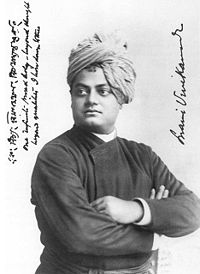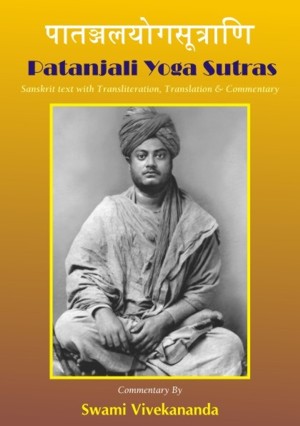50. बाह्याभ्यन्तरस्थम्भ वृत्तिः देशकालसन्ख्याभिः परिदृष्टो दीर्घसूक्ष्मः ॥५०॥
bāhya-ābhyantara-sthambha vṛttiḥ deśa-kāla-sankhyābhiḥ paridṛṣṭo dīrgha-sūkṣmaḥ ||50||
Its modifications are either external or internal, or motionless, regulated by place, time, and number, either long or short.
The three sorts of motion of this Pranayama are, one by which we draw the breath in, another by which we throw it out, and the third action is when the breath is held in the lungs, or stopped from entering the lungs. These, again, are varied by place and time. By place is meant that the Prana is held to some particular part of the body. By time is meant ho wlong the Prana should be confined to a certain place, and so we are told how many seconds to keep on motion, and how many seconds to keep another. The result of this Pranayama is Udghata, awakening the Kundalini.
51. बाह्याभ्यन्तर विषयाक्षेपी चतुर्थः ॥५१॥
bāhya-ābhyantara viṣaya-akṣepī caturthaḥ ||51||
The fourth is restraining the Prana by directing it either to the external or internal objects.
This is the fourth sort of Pranayama. Prana can be directed either inside or outside.
52. ततः क्षीयते प्रकाशावरणम् ॥५२॥
tataḥ kṣīyate prakāśa-āvaraṇam ||52||
From that, the covering to the light of the Chitta is attenuated.
The Chitta has, by its own nature, all knowledge. It is made of Sattva particles, but is covered by Rajas and Tamas particles, and by Pranayama this covering is removed.
53.धारणासु च योग्यता मनसः ॥५३॥
dhāraṇāsu ca yogyatā manasaḥ ||53||
The mind becomes fit for Dharana.
After this covering has been removed we are able to concentrate the mind.
54. स्वविषयासंप्रयोगे चित्तस्य स्वरूपानुकारैवेन्द्रियाणां प्रत्याहारः ॥५४॥
svaviṣaya-asaṁprayoge cittasya svarūpānukāra-iv-endriyāṇāṁ pratyāhāraḥ ||54||
The drawing in of the organs is by their giving up their own objects and taking the form of the mind-stuff.
These organs are separate states of the mind-stuff. I see a book; the form is not in the book, it is in the mind. Something is outside which calls that form up. The real form is in the Chitta. These organs are identifying themselves with, and taking the forms of whatever comes to them. If you can restrain the mind-stuff from taking these forms the mind will remain calm. This is called Pratyahara. Thence arises supreme control of the organs.
When the Yogi has succeeded in preventing the organs from taking the forms of external objects, and in making them remain one with the mind-stuff, then comes perfect control of the organs, and when the orgns are perfectly under control, every muscle and nerve will be under control, because the organs are the centres of all the senstations, and of all actions. These organs are divided into organs of work and organs of sensation. When the organs are controlled the Yogi can control all feeling and doing; the whole of the body will be under his control. Then alone one begins to feel joy in being born; then one can truthfully say, “Blessed am I that I was born. “ When that control of the organs is obtained, we feel how wonderful this body really is.[2]
 Swami Vivekananda
Swami Vivekananda
